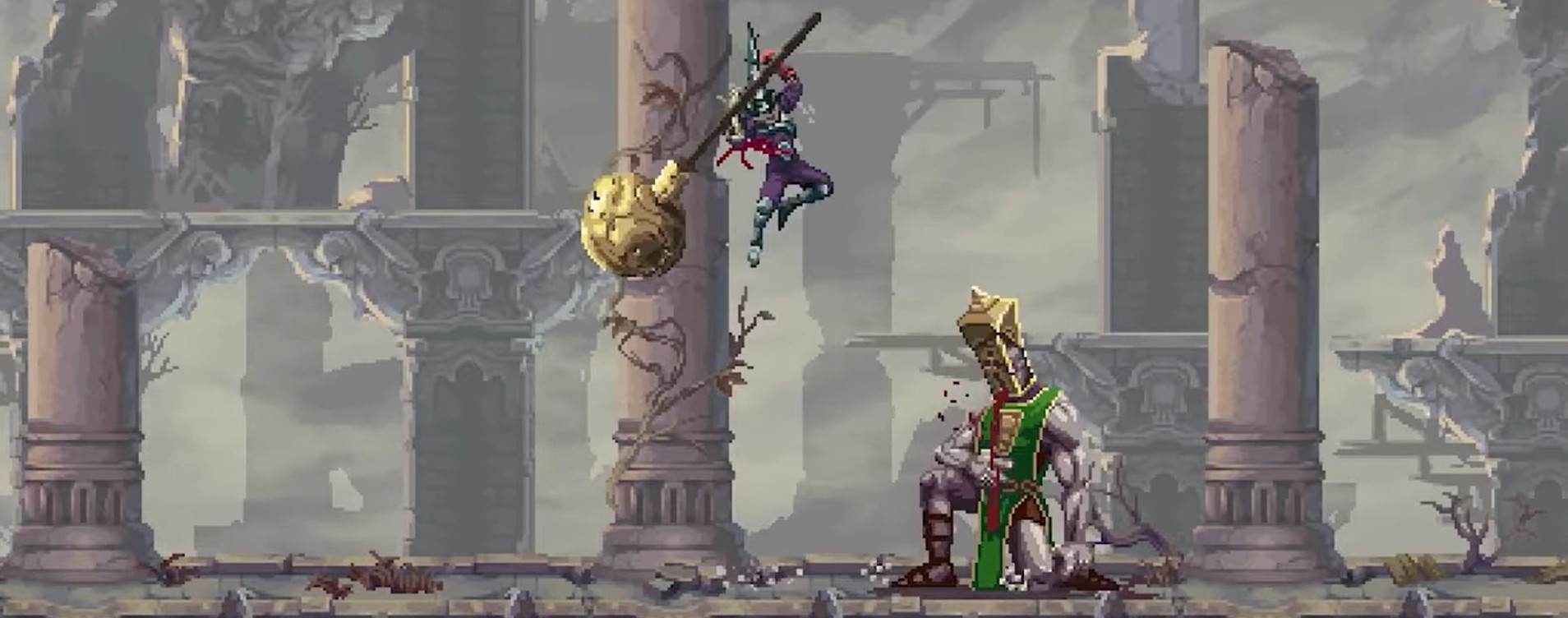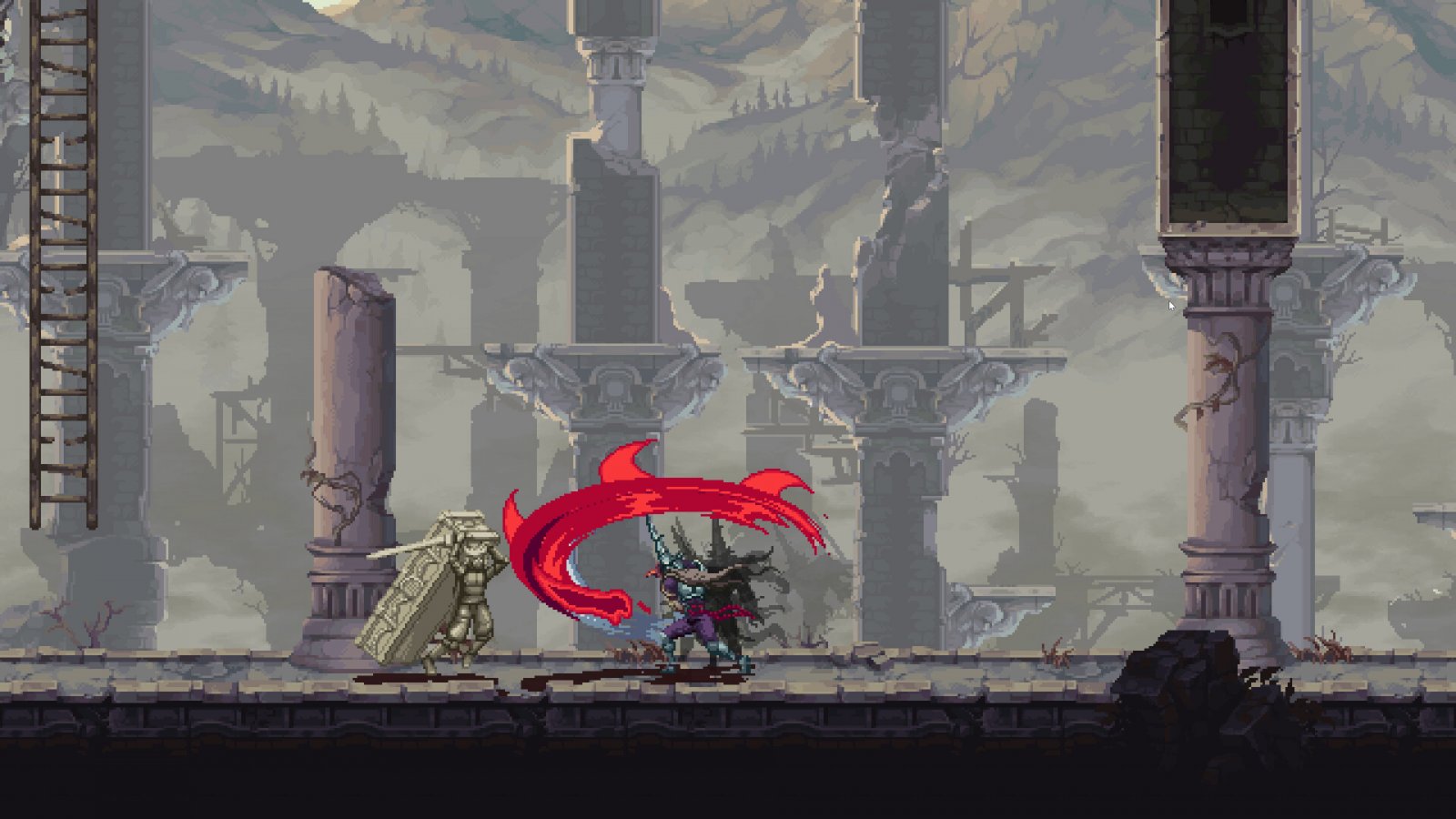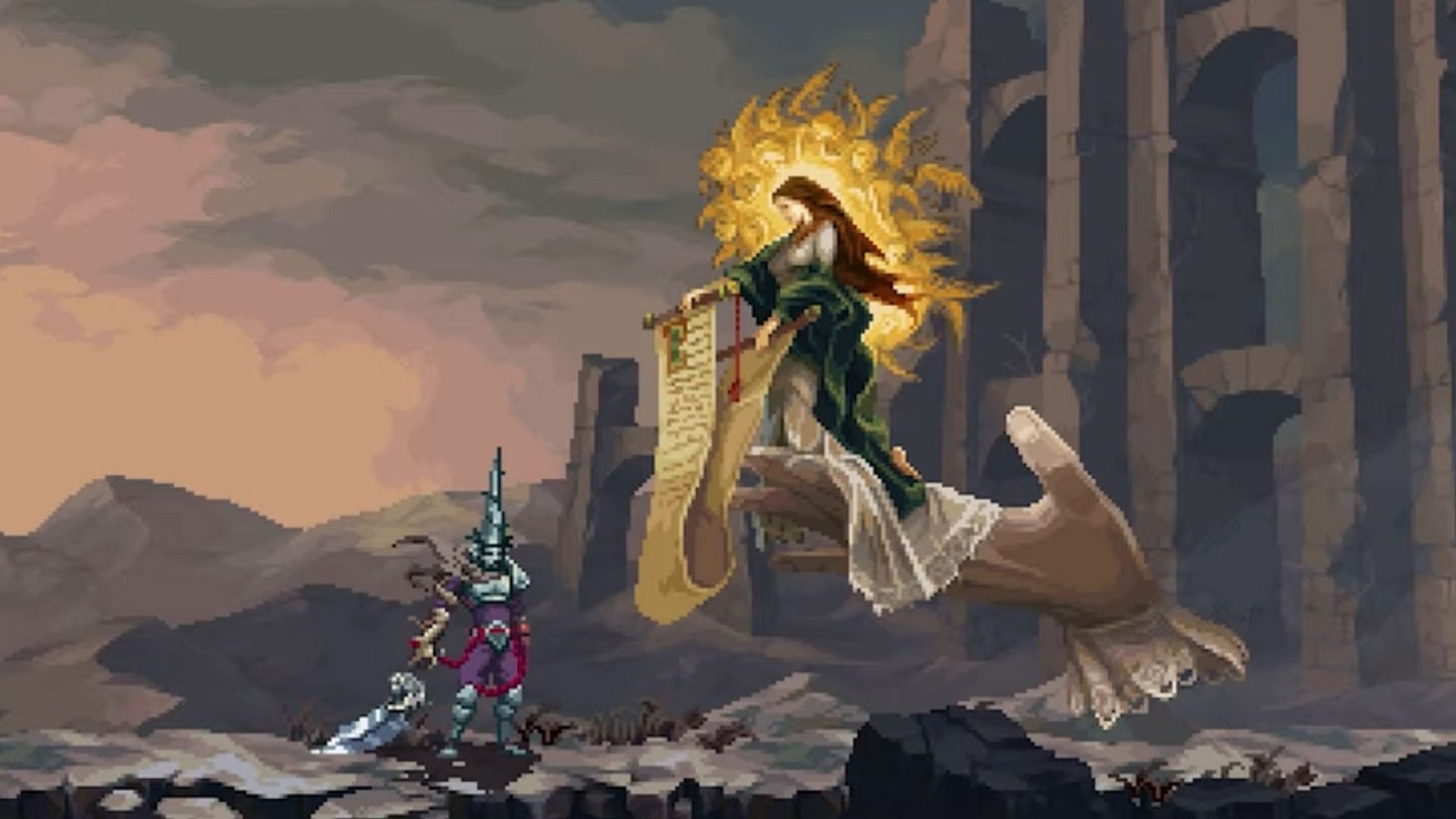Blasphemous 2: The Best Metroidvania of 2023
No one expects the Spanish Inquisition

Upon its release in 2019, Blasphemous received much positive press, especially with regard to the game's religion-centric pixel art and music. Sprites exhibited an uncanny amount of detail, while a flamenco guitar served as the primary contributor to the unique soundtrack. Carlos Viola is the man.
However, a lot of reactions to the title's gameplay were either lukewarm or poor. Not that there were any specific problems with combat or navigation, but nothing about the gameplay set Blasphemous apart from its contemporaries. It isn't particularly difficult for development teams to find effective game mechanics, like air-dashing and double-jumping, on Stack Overflow, so their absence from the game was noticeable and difficult to explain.
Now four years later, Blasphemous 2 introduces many tweaks to gameplay that have a majorly positive impact on general combat, bosses, and navigation. Detailed pixel art and unique music are no longer the only attraction, now serving as the backdrop for a challenging trek through impeccable dungeons. Outshining its predecessor, Blasphemous 2 establishes itself as the best Metroidvania of 2023 if not the best example of the genre since Ori and the Will of the Wisps.

A Weapon Overhaul Diversifies Combat
Combat features the most immediate improvements. Mea Culpa, the weapon from the original game, was nothing more than competent. Parries were somewhat satisfying, and a combo’s final hit felt devastating. Blasphemous 2 employs broader sprites and crunchier sound effects for much weightier, more satisfying attacks.
Ruego al Alba Offers a Bit of Everything
Three new weapons supplant Mea Culpa. Each offers its own traversal ability, elemental bonus to physical damage, skill tree, and set of attacks. The tutorial introduces Ruego al Alba as the most balanced weapon in the Penitent One’s arsenal. The moveset of this Moorish, scimitar-looking blade resembles Mea Culpa’s most closely, elaborating on the original weapon’s abilities with bonus “mystical” damage, a “ground pound” that breaks certain surfaces, and a “rage” mechanic.
I hesitate to explain the concept of “rage” to fellow gamers, but it’s typically a temporary state during which attacks deal much more damage. My favorite part of entering the “rage” state was that my attacks would always devastate enemies. Even during my first playthrough, I never felt like I was wasting “rage.” Because I never wasted it, I used it a lot. Also, “rage” is as easy to reobtain as it is to deplete. I could have used it every three rooms, if necessary.
Sarmiento y Centella Rewards Skill
I began my first playthrough with the second weapon I’d like to discuss: the rapier-and-parrying-dagger duo, Sarmiento y Centella. The tutorial advertises them as the fastest weapons in the arsenal. Requiring the utmost skill, they reward technique: The more hits you land without taking damage, the more bonus “lightning” damage each hit with Sarmiento y Centella deals. As for the duo’s traversal ability, you can hit mirrors that teleport you in front of other mirrors. The blades also employ Mea Culpa’s powerful thrust attack from the first game.

Veredicto Protects Rookies
Finally, there’s Veredicto, a giant mace whose head is a massive censer that you can ignite to deal extra “fire” damage. It’s so heavy that you can’t even parry with it. The opposite of Sarmiento y Centella, Veredicto is a safe weapon for rookies, inheriting Mea Culpa’s charge attack. With this behemoth, you can hit giant bells that open certain gates and cause certain platforms to appear.
Traversal Abilities Are the Main Benefit
That Ruego al Alba replaces Mea Culpa from the first game was obvious to me, and I didn’t find the other two to be as effective, but I’ve seen footage of players excelling with them. Maybe I’ll get there with enough practice.
For now, I recommend Ruego al Alba as the most intuitive, familiar weapon. Sarmiento y Centella and Veredicto don’t even offer combos. There’s just a one-size-fits-all attack. Whichever weapon you favor, the other two are essentially for traversal because you can’t use weapons simultaneously and there are no explicit use cases for specific weapons. The option to wield traversal abilities as genuine weapons is more of a quality-of-life improvement than anything else.
Advanced Enemy Behavior Presents a New Challenge
Blasphemous 2 contains more advanced enemies whose behaviors can include any combination of movement, melee attacks, and ranged attacks, so bosses are a little sharper, too. A major element of both games, bosses have progressed from hulking giants with practically pedagogical movesets, like the Warden of the Silent Sorrow at the beginning of the first game, to dexterous dancers with diverse movesets, like the Faceless One at the start of the second game, who’s essentially a nerfed Quirce. Though Blasphemous 2 confronts players with more lethal bosses, the Penitent One has had enough practice dispatching sentient embodiments of guilt to cut down new threats.

Cherubim Are Fun to Find
The suite of new abilities also allows for fluid navigation across all environments. Dungeons have become dynamic, much less arbitrary combinations of agility puzzles and skirmishes.
The Cherubim are a case study of navigational improvements. In both games, Cherubim are among the primary collectibles; to collect all of them is to receive both an in-game trinket and bragging rights. In the original game, there were 38, none of whom were out-of-the-way. You could look at the wiki once and be set for life.
Blasphemous 2 has 33 Cherubim, but they’re more difficult to find, calling for greater engagement with the game’s world through double jumping, climbing, or dashing, and there’s a large tower that displays the progress you’ve made in an interactive way. While the ultimate reward isn’t much less underwhelming than the reward for uncovering the first game’s Cherubim, everything you earn is usable, including an item necessary to unlock one of the endings.
Variety Breathes New Life into the Franchise
As for peripheral items, the art has morphed from an old-fashioned, pixelated gig to more of a purely representational one. The pixelated appearance remains, but there are more details, and cutscenes appear to be made with conventional animation.
Regarding music, while I don’t think one soundtrack is better than the other, the second one certainly has more variety. One boss tune contains percussion exclusively. Blasphemous 2’s soundtrack soars to the usual upbeat fare of crisp flamenco guitar, but it’s not afraid to plummet to scarier vibes for dark, murky areas. Apart from the percussion-only song, there seems to be a greater diversity of instruments as well.
The sequel also replaces impotent passives, like the first game’s Sword Hearts which provide some benefit at a profound cost, with the Altarpiece of Favors, which functions like a second set of Rosary Beads geared toward offense and utility instead of defense. You can outfit this Altarpiece upon the Penitent One’s back with figures, and if you use enough of a single type of figure, you’ll earn a major damage bonus for one of the three weapons. These bonuses are called Resonances.

More Streamlined, More Challenging
Overall, the jump from Blasphemous to Blasphemous 2 is similar to the jump from Dark Souls to Dark Souls 3. Part of what made the original game so difficult was the trickery. There’s a significant amount of scenarios that play out like, “Talk to this guy, but if you fought that other guy, first, the whole side quest is forfeit until your next playthrough.” You need to look at the Rosary Bead descriptions to understand what they do, the main quest doesn’t have labels on the map, and donating to the church at Albero has no obvious benefit to the player in spite of actually offering many benefits. Outside of DLC, there was a significant amount of content I would’ve never discovered without the internet’s help.
Blasphemous 2 is a lot more straightforward. Like the first game, it follows From Software’s dependable formula of, “Kill these three or four bosses in any order, kill this one boss, kill another few bosses in any order, and kill the final boss". But this feels a lot longer than that generalization would contend, in part because all accomplishments are so important to the main quest. Instead of hiding content, Blasphemous 2 obviates content.
Blasphemous has rocked the indie scene since 2019, but Blasphemous 2 has unequivocally catapulted this loveable indie franchise among the ranks of Hollow Knight, Ori, and Celeste. Don't miss this sequel if you're a fan of those titles, or Metroidvanias in general.
